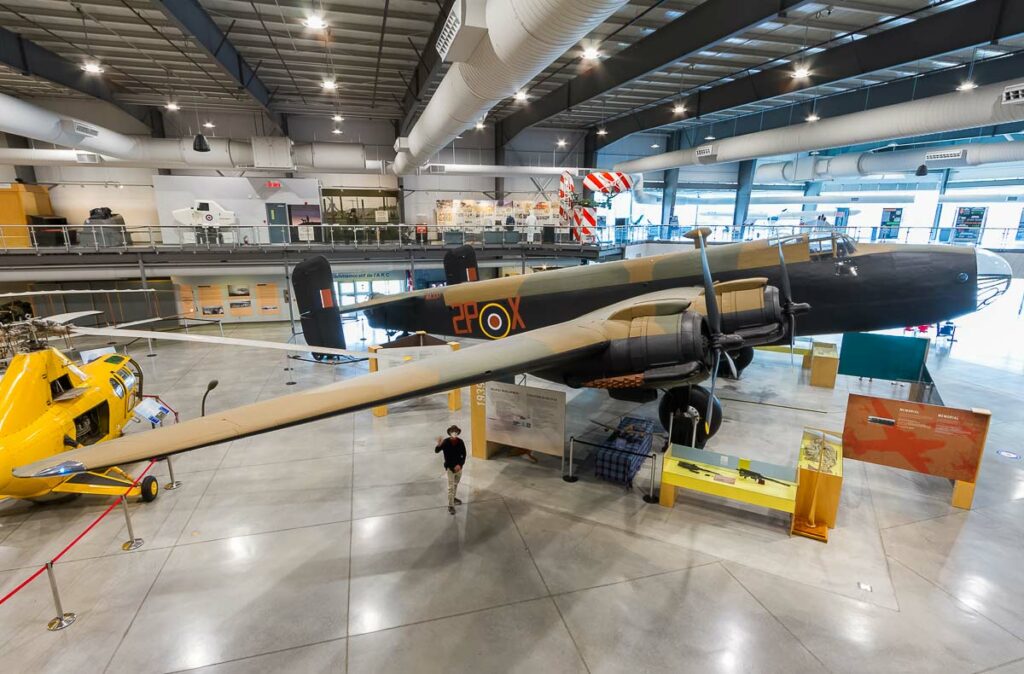The Handley Page Halifax, a WWII British heavy bomber, was distinguished by its four Rolls-Royce Merlin engines, large payload capacity, and versatility in various roles.
This article provides a comprehensive overview of the Handley Page Halifax, a significant British heavy bomber of World War II. It discusses the aircraft’s development, design, performance, and military use, emphasizing its impact in the European theater, versatility in roles, and its evolution throughout the war.
The Handley Page Halifax was one of the most important British heavy bombers of World War II, alongside the Avro Lancaster. As a key component of the Royal Air Force’s (RAF) bombing campaign, the Halifax played a vital role in Allied operations. This article aims to explore the development, design, operational performance, and combat history of the Halifax, providing insight into its significance in military aviation history.
History of the Development of the Handley Page Halifax
The development of the Halifax began in the late 1930s, during a period marked by rapid advancements in military aviation and increasing geopolitical tensions. The British Air Ministry, anticipating the need for powerful and capable long-range bombers, initiated the development of the Halifax as part of the expansion of the RAF’s bomber fleet.
The project was undertaken by Handley Page, a prominent British aerospace manufacturer, under the leadership of chief designer George Volkert. The program was launched to create a bomber capable of delivering heavy payloads over long distances, with robust defensive capabilities. The Halifax’s first flight took place on October 25, 1939.
Its development was a response to the strategic demands of impending global conflict and the need for effective aerial bombardment capabilities.
Design of the Handley Page Halifax
The Halifax was designed as a heavy bomber with four Rolls-Royce Merlin engines, each producing significant power. This engine arrangement provided the Halifax with a good balance of speed and lifting capacity. It had a wingspan of 31.75 meters and a length of 21.82 meters.
The aircraft’s design featured a distinctive twin-finned tail and a deep, well-structured fuselage capable of carrying large bomb loads. The Halifax could carry up to 5,800 kilograms of bombs, making it one of the most potent bombers of its time.
One of the design limitations was its relatively lower ceiling and speed compared to the later versions of the Avro Lancaster. However, the Halifax was praised for its robustness and reliability, which made it a versatile platform for various wartime roles.

Performance of the Handley Page Halifax
In terms of performance, the Halifax was capable of a maximum speed of around 454 kilometers per hour (282 miles per hour) and had a service ceiling of approximately 7,315 meters (24,000 feet). It had a range of about 3,057 kilometers (1,900 miles), allowing it to conduct long-range bombing missions across Europe.
Compared to its contemporaries like the Lancaster and the American B-17 Flying Fortress, the Halifax had a slightly lower speed and operational ceiling but compensated with its payload capacity and versatility. Its performance was continually improved in later versions.
Military Use and Combat of the Handley Page Halifax
The Halifax was initially equipped with multiple machine guns for defense, including in the nose, tail, and dorsal turrets. It played a crucial role in various RAF operations, including strategic bombing campaigns over Germany, maritime patrols, and special operations such as parachuting agents and supplies into occupied Europe.
The Halifax was involved in some of the most significant operations of the war, including the Battle of the Ruhr and the bombing of Berlin. While it faced strong competition from the Lancaster, the Halifax was a key part of the RAF’s bombing strategy throughout the war.
The aircraft was also used by several other Allied air forces and continued to serve in various roles post-World War II before being phased out in favor of newer jet-powered bombers.
The Handley Page Halifax holds an important place in the history of World War II aviation. Its development, design, and operational use reflect the strategic needs and technological advancements of the era. The Halifax’s contributions to the Allied war effort, particularly in the realm of strategic bombing, underline its significance as a heavy bomber and its legacy in military aviation.
Back to the Bombers section.